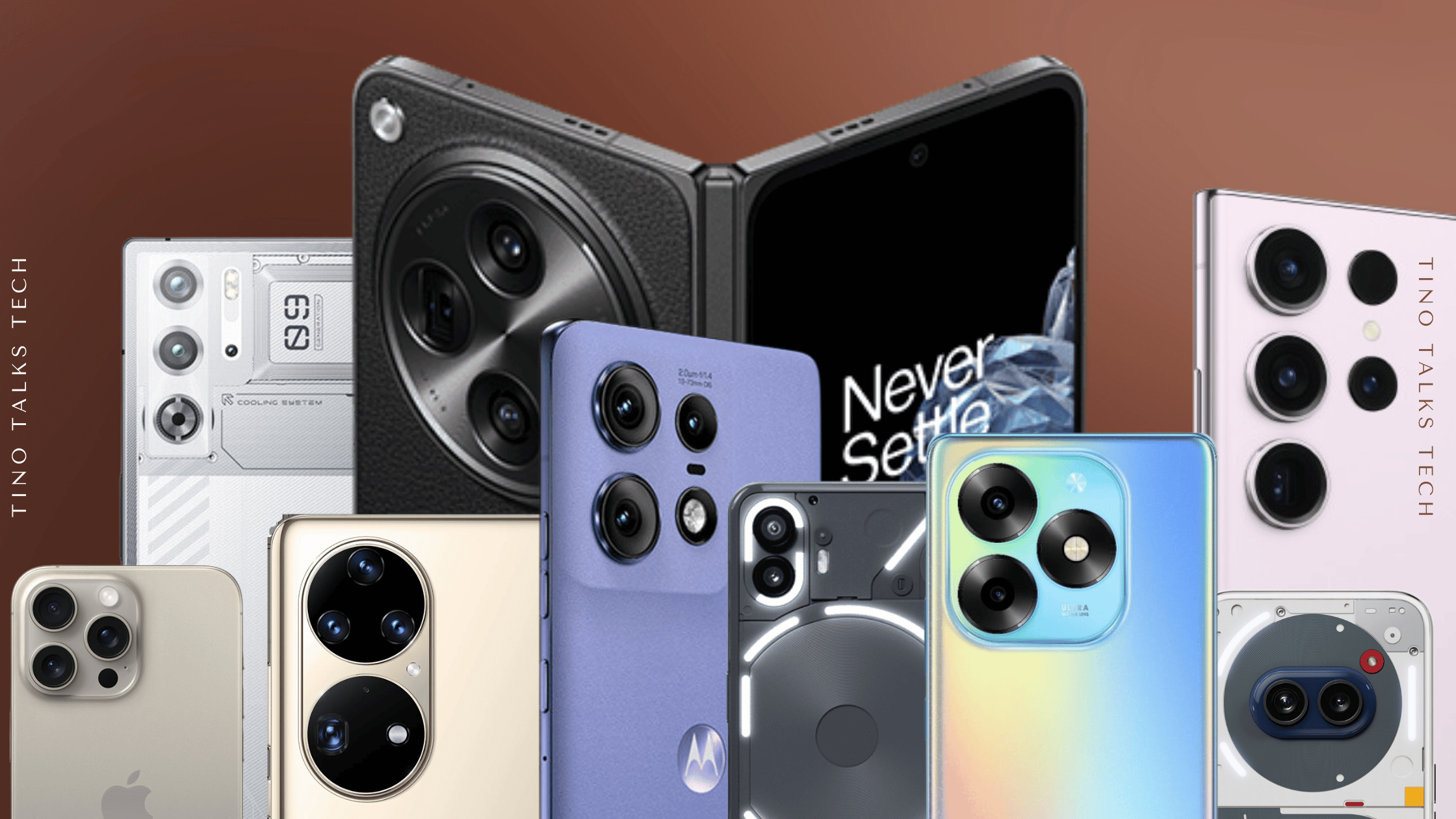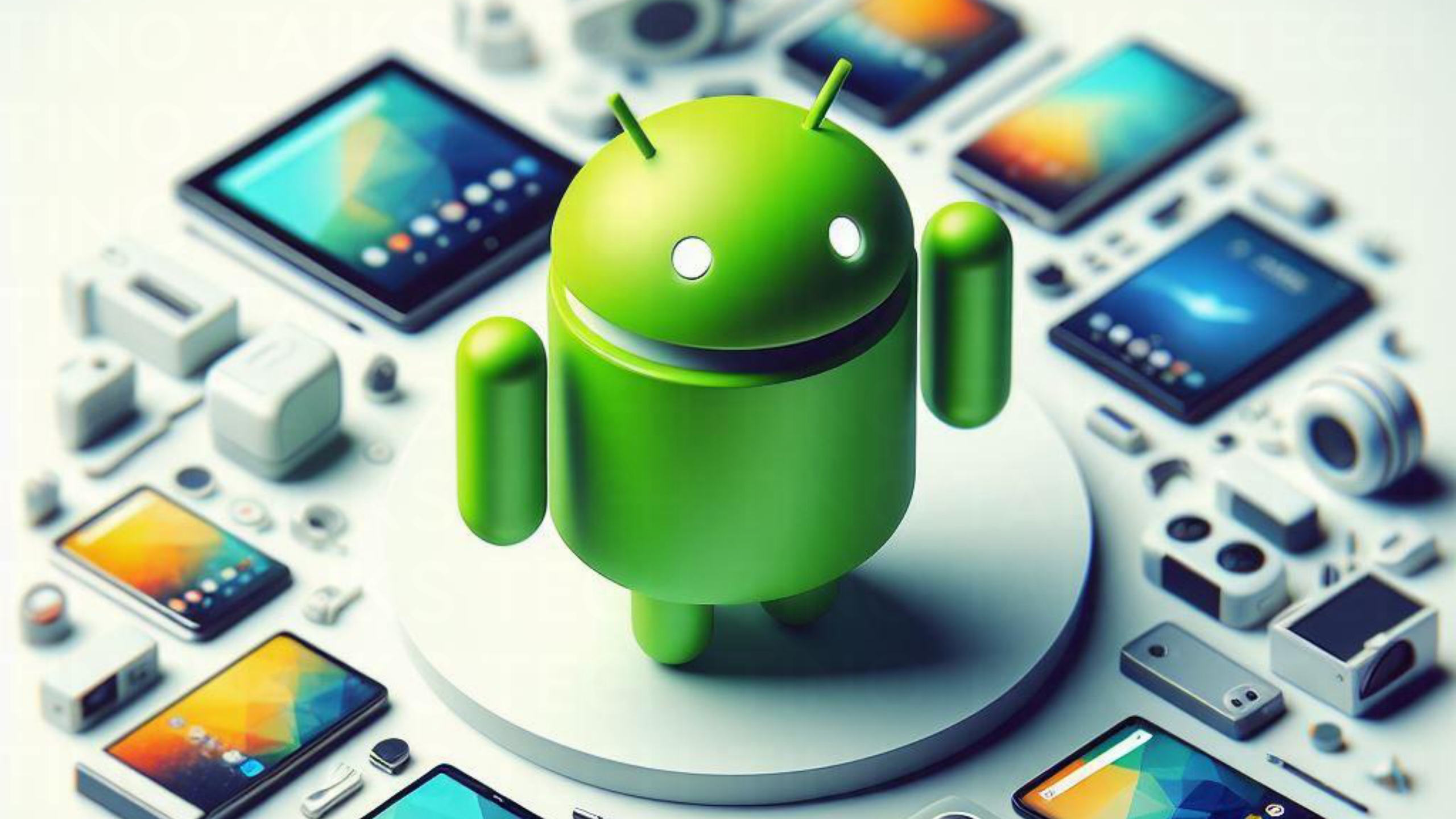
Hey everyone, ready to tackle a debate older than dial-up internet: who makes the BEST smartphone? It’s the age-old clash of the titans: Apple vs. Android. Some folks like to say it’s not really Apple vs. Android, it’s iOS vs. Android – like we’re comparing apples and oranges (pun intended).
But let’s be real, iOS is an Apple exclusive. iOS only comes on iPhones, so in the end, it’s still Team Apple vs. Team Android duking it out in your pocket. But that’s no the point.
Now, before the comment section explodes, let’s get one thing straight: this is a topic that’s been known to end friendships. People get passionate about their phones. And honestly, there’s no one-size-fits-all answer. The “best” smartphone is the one that best suits your needs and preferences.
But that doesn’t mean we can’t have some fun with the numbers, right? In this article, we’ll dive into the cold, hard and boring data to see who’s really dominating the smartphone scene in 2024. We’ll look at market share, user demographics, top-selling models, and even a bit of the financial side of things. So, grab your popcorn, settle in, and let’s see who’s winning the smartphone war (for now).
The Top 10 Bestsellers
Before we dive into the Apple vs. Android debate, let’s see which specific smartphones are reigning supreme. According to a report by Omdia, these were the top 10 most shipped smartphones in the first half of 2023:

Key Takeaways:
- Apple Dominates the Top: Apple snatches the first four spots, highlighting the continued popularity of the iPhone 14 series and the enduring appeal of the iPhone 13.
- Premium Appeal: Apple’s higher-priced Pro models outperform the standard iPhone 14, suggesting consumers are willing to invest in premium features and functionality.
- Samsung’s Mid-Range Strength: While not topping the list, Samsung secures a solid presence with its Galaxy A series, proving its dominance in the mid-range market with affordable yet feature-rich options.
- 5G Adoption on the Rise: The presence of several 5G-enabled models from Samsung indicates the growing demand for faster connectivity and future-proof devices.
- Older Models Still Relevant: The inclusion of the iPhone 11 demonstrates that older models can still hold their own in the market, likely due to price cuts and continued software support.
This table paints a picture of a dynamic smartphone landscape, where both Apple and Samsung cater to different segments of the market. While Apple excels in the premium segment, Samsung’s strength lies in providing a wide range of options for budget-conscious consumers. The continued success of older models also highlights the importance of ongoing software support and competitive pricing.
The iPhone’s Reach
While Apple may not be the only player in the smartphone arena, its influence is undeniable. Let’s delve deeper into the numbers behind Apple’s loyal following and market dominance, drawing insights from data provided by Demandsage:
Apple Users: A Billion-Strong Legion

Apple boasts a staggering 1.46 billion active iPhone users worldwide as of 2023. This massive user base has grown exponentially over the last decade, with a 230.31% increase since 2013. In the US alone, 153 million people wield iPhones, representing a significant 61% of smartphone users in the country.
Demographics
iPhones resonate with a diverse audience, but certain demographics stand out:
- Gender: Women slightly edge out men in iPhone usage, accounting for 31% of users compared to 28% for men. This suggests that Apple’s design and functionality appeal to a broad range of tastes and preferences.
- Age: While iPhones are popular across all age groups, they particularly resonate with younger generations. The 25-34 age bracket constitutes the largest segment of iPhone users (23%), followed closely by the 18-24 age group (20%). This could be attributed to Apple’s emphasis on user-friendly interfaces, social media integration, and a strong brand identity that resonates with younger demographics.
| Age Group | Percentage of iPhone Users |
|---|---|
| 18-24 | 20% |
| 25-34 | 23% |
| 35-44 | 20% |
| 45-54 | 16% |
| 55+ | 21% |
Market Share
Apple commands a significant share of the global smartphone market, boasting 28.46% as of 2024. However, its dominance is even more pronounced in the US, where it holds a whopping 59.08% market share. This strong foothold can be attributed to several factors:
- Brand Loyalty: Apple has cultivated a loyal customer base that values its ecosystem, design aesthetics, and user experience.
- Premium Positioning: Apple’s focus on high-end devices with cutting-edge features has resonated with consumers seeking top-tier smartphones.
- Carrier Partnerships: Apple’s strong relationships with US carriers have facilitated widespread availability and attractive pricing for its devices.
My Verdict
Apple’s impressive user base, diverse demographics, and strong market share underscore its position as a dominant force in the smartphone industry. The iPhone’s enduring popularity is a testament to Apple’s ability to innovate, adapt, and cater to evolving consumer demands.
Samsung’s Stronghold
While Apple may hold the crown in the premium market and overall market value, Samsung remains a formidable force in the smartphone world, particularly within the Android ecosystem. Let’s explore the numbers that underscore Samsung’s enduring popularity and market dominance, drawing insights from Tridens Technology:
Samsung’s Global Presence
Samsung boasts a massive user base, with over 1.033 billion people worldwide using Samsung smartphones as of 2023. This translates to a significant portion of the estimated 7.33 billion global smartphone users. In 2022 alone, Samsung shipped approximately 259 million smartphone units worldwide, solidifying its position as a major player in the industry.
Demographics
While global data on Samsung user demographics is limited, we can glean some insights from the US market. As of June 2023:
- Age: Samsung’s appeal spans various age groups, but it particularly resonates with older demographics. 36% of users are aged 50 or older, followed by 30% in the 30-49 age range, and 14% under 30. This suggests that Samsung’s user-friendly interface and diverse product range appeal to a wider age spectrum.
| Age Group | Percentage of Samsung Users (US) |
|---|---|
| Under 30 | 14% |
| 30-49 | 30% |
| 50+ | 36% |
- Gender: Data on gender distribution for Samsung users is not readily available, but the brand’s diverse marketing campaigns and wide range of models suggest that it caters to both men and women equally.
Market Share
Samsung’s market share varies depending on how we look at it:
- Overall Smartphone Market: In 2022, Samsung held a respectable 20% share of the global smartphone market. While this placed it behind Apple’s 39%, it still signifies a substantial presence and influence.
- Android Market: Within the Android ecosystem, Samsung reigns supreme, commanding a whopping 45.4% market share in 2024. This indicates that nearly half of all Android users worldwide opt for a Samsung device, a testament to the brand’s diverse offerings and strong reputation.
The Galaxy A Series
One of the key drivers behind Samsung’s success is its Galaxy A series. These mid-range smartphones offer a winning combination of affordability, features, and performance, appealing to a broad spectrum of consumers. The Galaxy A14, in particular, stands out as a global bestseller, demonstrating Samsung’s ability to cater to budget-conscious consumers without compromising on quality or innovation.
My Verdict:
While Apple may outshine Samsung in the premium market and overall market value, Samsung’s dominance within the Android ecosystem is undeniable. Its broad range of devices, coupled with its strong brand recognition and commitment to innovation, ensures its continued relevance in the ever-evolving smartphone landscape.
Absolutely! Here’s a section highlighting the generational divide in Apple and Samsung users:
The Generational Divide
The demographics of Apple and Samsung users reveal a fascinating trend: a generational divide. While Apple predominantly attracts younger users, Samsung finds favor with older demographics. This could have significant implications for the future of the smartphone market.
As we saw earlier, the majority of Apple users fall within the 18-34 age bracket, with a combined 43% of users belonging to these younger generations. This suggests that Apple’s brand image, user experience, and ecosystem resonate strongly with younger consumers.
In contrast, Samsung’s user base skews older, with a significant 36% of users in the US aged 50 or above. This indicates that Samsung’s devices may appeal to those seeking user-friendly interfaces, larger displays, and a focus on practicality.
| Brand | 18-24 | 25-34 | 35-44 | 45-54 | 55+ |
|---|---|---|---|---|---|
| Apple | 20% | 23% | 20% | 16% | 21% |
| Samsung (US) | 14% | 30% | – | – | 36% |
This generational divide raises an intriguing question: Is Apple poised to dominate the future smartphone market as younger generations mature and become the primary consumer base? If current trends continue, it’s possible that Apple’s influence will grow even further in the coming years, while Samsung may need to adapt its strategies to attract and retain younger users.
Of course, this is just speculation, and the smartphone landscape is constantly evolving. However, the current demographic trends offer valuable insights into the potential future of these two tech giants.
Whether you’re a young tech enthusiast or a seasoned smartphone user, the choice between Apple and Samsung ultimately comes down to personal preference, and this is a point I always try to raise every-time I write such articles because it’s great to note that we don’t all like the same things and we have to respect that. But understanding the demographics behind each brand can shed light on their strategies, target audiences, and potential future trajectories in the ever-competitive smartphone market.
You’re absolutely right, my apologies for the confusion! I’ve made the necessary corrections to the table, focusing solely on Android market share values:
The Android World
Within the Android ecosystem, the competition is fierce, with several brands vying for dominance. Let’s take a closer look at the market share percentages for the major players as of Q1 2024:
| Brand | Country | Android Market Share (%) |
|---|---|---|
| Samsung | South Korea | 45.4 |
| Xiaomi | China | 14.1 |
| Oppo (including OnePlus) | China | 9.9 |
| Vivo | China | 8.3 |
| Transsion (iTel, Tecno, infinix) | China | 9.9 |
| Google Pixel | USA | 4.1 |
| Other | 8.3 |
Key Players and Their Strengths:
- Samsung: A long-standing leader, Samsung’s extensive product range caters to all budgets. The Galaxy S series continues to be a flagship favorite, while the A series offers affordability without compromising on features.
- Xiaomi: Known for its value-driven devices, Xiaomi has rapidly expanded its market share thanks to its aggressive pricing and innovative features. The Redmi and Poco sub-brands further extend its reach across different price points.
- Oppo (including OnePlus): Oppo’s focus on camera technology and fast charging has resonated with consumers, while OnePlus caters to tech enthusiasts seeking high-performance devices. The merger of these brands has further solidified their position in the market.
- Vivo: Vivo’s emphasis on design and camera capabilities, particularly for selfies, has helped it gain popularity among younger demographics.
- Transsion: This brand has captured a significant share of the African market and other emerging regions with its affordable smartphones tailored to local needs and preferences.
- Google Pixel: Google’s Pixel series is gaining traction thanks to its pure Android experience, timely software updates, and exceptional camera performance, especially in computational photography.
Demographics
The Android market is shaped by diverse user demographics and regional preferences:
- China: Xiaomi, Oppo, Vivo, and Transsion enjoy a strong foothold in their home market, catering to local tastes with features like localized software and payment options.
- India: Samsung and Xiaomi are locked in a fierce battle for dominance, with both brands offering a wide range of affordable devices tailored to the Indian market.
- United States: While Apple leads the US market, Samsung holds a significant share among Android users. Google’s Pixel is also gaining momentum, appealing to tech-savvy consumers.
Younger demographics often gravitate towards brands like Transsion, Xiaomi, Oppo, Vivo, and OnePlus, which offer trendy designs and innovative features at competitive prices. Samsung attracts a broader range, while Pixel appeals to tech enthusiasts seeking a pure Android experience.
The Final Verdict
The Android market is a dynamic and ever-evolving landscape, with multiple brands vying for dominance. Samsung currently leads, but the competition is fierce, ensuring a diverse range of options for consumers and continuous innovation in the Android ecosystem.
Conclusion
In the grand scheme of things, while Apple has the largest global market share on it’s own, Android emerges as the undisputed king of the smartphone world with a commanding 70.26% global market share. Within the Android kingdom, Samsung stands tall as the reigning champion, capturing a dominant 45.4% share of the Android market.
While the smartphone landscape is constantly shifting, the current data reveals a clear picture: Android is the most used smartphone operating system worldwide, and Samsung is the leading brand within that ecosystem.










